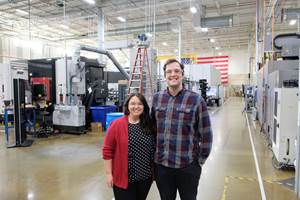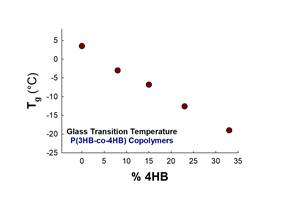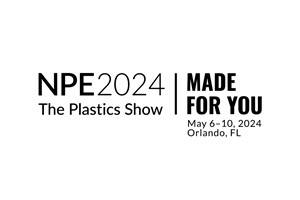Replacing PFAS, a Transition in Processing Lubricants
Chemical manufacturers, polymer compounders and converters are making moves toward PFAS-free.
Polytetrafluoroethylene (PTFE or Teflon) was discovered in 1938. Thanks to the materials’ thermal stability and low surface energy, PTFE and other per- and polyfluorinated alkyl substances (PFAS) found a broad range of applications. Research in the 1970s showed their utility in plastics — as a processing aid, a mold release agent, surface treatment, etc. In the 1980s, the first fluoropolymer polymer processing aid (PPA) masterbatches were brought to market by DuPont.
Processing aids can improve the extrudability of many polymers and enable high throughput while maintaining quality and clarity, but it is especially relevant for polyethylene.
When converters began using linear low-density polyethylene (LLDPE) to make packaging film in the 1980s, they encountered the challenge of melt fracture in extrusion. Melt fracture occurs at the interface between the internal surfaces (such as the die) and the melted polymer. As in any fluid flow, the portion of the melt nearest the wall experiences a drag force. This causes a velocity profile between the walls and center of the path — especially pronounced when the path narrows as it does going into an extruder die. The differential between the high speed at the center of the channel and the slow speed or zero at the edges can cause the shear stress to exceed a limit — the critical shear rate — at which instability between the surface and the melt causes melt fracture. This is plainly visible on extruded film as the sharkskin effect.

Close-up of blown film with a sharkskin-like texture resulting from a melt fracture condition. Source: Norner AS
The development of metallocene catalysts in the 1980s enabled the production of LLDPE with narrower molecular weight distribution. This enhanced the clarity and mechanical properties of the film while complicating processing due to reduced melt strength compared with a more heterogenous distribution that would include longer chains. Interactions in the melt between disparate lengths of polymer chains in a broader distribution correlate with greater melt strength and thus a higher critical shear rate.
In 1980, Plastics Technology speculated that LLDPE film could soon be produced at industrial scale; today it is everywhere.
Fluoropolymer processing aids alleviated the melt strength problem by reducing the shear forces on the polymer melt. To overcome the problem of miscibility, polyethylene glycol was added to processing aids. The aids were so effective that it was possible to extrude even metallocene-catalyzed LLDPE at high speed and low temperature. In 1980, Plastics Technology speculated that LLDPE film could soon be produced at industrial scale; today it is everywhere.
By coating the surfaces of the die, fluoropolymer processing aids also reduced the build up, over time, of various deposits. These deposits can be destructive to efficiency and necessitate downtime for removal. Gels are another problem that PPAs manage by improving flowability, thus reducing the opportunity for nucleation of burnt particles.
Outside of extrusion, PFAS materials have found other applications in the plastics industry. They are used in injection molding as release agents, to improve the barrier properties of containers for hazardous materials, and as a replacement for toxic brominated flame retardants.
Health Concerns and Regulatory Status
Since the early 2000s, health concerns associated with the increased use of PFAS materials have increased as available data has accumulated, indicating that PFOS and PFOA are persistent in the environment and have a variety of health effects in humans and other species as well. These chemicals are used in the manufacture of PFAS polymers, both as a surfactant and as a feedstock material.
Hazard data and the corresponding threat to public health are more salient for monomer and oligomer forms, such as those used in mold release agents, than in polymer forms such as those used for extrusion processing aids. For example, the five chemicals targeted by the 2024 drinking water standard in the U.S. are all acids with 6- to 9-carbon chains. But because the low molecular weight forms are endemic to the production of fluoropolymers, their fates may be intertwined.
Many governments have taken steps to restrict or ban the use of PFAS materials. While the national water standard in the U.S. was rescinded in May, laws in Maine and Minnesota require the disclosure of PFAS material use and set timelines for phasing out PFAS in applications unless they are shown to be essential. California, Colorado, Hawaii, Oregon and Washington restrict the use of PFAS in food packaging. The California law includes the unintentional addition of PFAS materials. A variety of other state-level laws restricting PFAS use is specific to other applications. In Europe, the Registration, Evaluation, Authorization and Restriction of Chemicals (REACH) has restricted the use of PFAS since 2023, and a 2025 revision is expected to add further restrictions.
Replacement Solutions in PFAS-Free Compounds
In anticipation of the transition, producers and compounders have been working for years on PFAS alternatives. These solutions can be evaluated in a series of ways for their utility as processing aids.
, which provides technical services to the plastics industry at its facility in Norway, has conducted trials with PFAS-free processing aids using capillary rheometry and a blown film line. These trials look at the effect on the critical shear rate and the appearance of the resulting film, including the time to clear. Evaluating the ability to reduce gels or die buildup is more difficult to model on a small scale. Die buildup can be accelerated using large amounts of calcium carbonate.

Visible clouding of the film bubble is the result of instability at the interface between the polymer melt and the tooling surface. Source: Norner AS
While the chemistry may vary, and details about chemistries are often kept confidential, results suggest that the mechanism of action is similar to incumbent processing aids. “From the limited amount of testing, we do see a similar behavior in the sense that there is a time dependency,” says Albrecht Dix, ´óĎó´«Ă˝ development project manager at Norner. “Time dependency means that you have a certain accumulation or coating taking place. If you have some melt fracture, eventually that’s going to clear as you coat the surfaces.”
Data shows that the various PFAS-free processing aids are successful in clearing the melt, though they may take more time or higher dosing rates than the incumbent fluoropolymer solutions.
One strategy is to choose chemistries that have similar properties to fluoropolymers, such as siloxanes. Siloxane-based materials have higher but comparable surface energy. “The silicone chemistries that we are looking at — especially Silquest PA-1 — are really designed to have a similar mechanism as the fluoropolymers and at a similar concentration range,” says Momentive Research Scientist Sebastian Russell. Momentive “stress tests” its processing aids, Russell says, by running at scale with difficult, fractional melt materials to verify reduction in die build up as well as clearing melt fracture.
Functionally, siloxanes have shown promise in reducing melt fracture and die buildup — even in challenging materials like metallocene-catalyzed LLDPE — and form the basis for products now available to processors. Like fluoropolymers, siloxane materials are stable and inert, providing compatibility with most other additives.
Available information from suppliers of other aids focuses on the functional performance in clearing melt fracture and reducing pressure. Some are aimed at improving flow by providing internal lubrication, in contrast to fluoropolymers and siloxanes (external lubricants). Some are hybrids that feature both internal and external lubricants.

Avient’s Cesa Non-PFAS processing aid is designed to reduce friction between the polymer and metal during film extrusion. Source: Avient
BYK and Evonik each offer siloxane based as well as non-siloxane PFAS-free PPA products. Daikin’s DAHC-101 product is described as 100% hydrocarbon. Baerlocher, Clariant, Dover, and Evonik offer other PFAS-Free PPAs with chemistries other than siloxane based.
| Supplier | Product |
|---|---|
| Ampacet | PFAS-Free PPA 1001316-N |
| Avient | Cesa Non-PFAS Processing Aid |
| Baerlocher | Baerolub AID PPA 2201, 2202 |
| BYK | MAX P 4109, 4110 |
| Clariant | AddWorks PPA 122 G, 101 FG |
| Daikin | DAHC-101 |
| Dover | DoverClear 840, 841 |
| Evonik | Tegomer 6810, 6850, Tego XP 21052 |
| Ingenia | IP1171 |
| Mitsui | EverGlide PA |
| Momentive | Silquest PA-1 |
| Silike Tech | Silmer 5090 |
| Techmer | HiTerra T5 |
Partial list of PFAS-free processing aids for film extrusion.
Other considerations where solutions may vary are temperature dependence, printability, dosage required, coefficient of friction, resulting surface finish, sealing and film clarity.
One of these approaches or a group of them may emerge as a new standard, as the fluoropolymer solutions offered by DuPont and 3M did historically, or the choice may be application dependent.
Other Solutions: Looking Beyond Chemistry
Chemistry alone may not provide a drop-in replacement with all of the benefits of PFAS compounds. Rather, it is likely that a combination of approaches will be required. Running metallocene LLDPE may require running at a slower speed or a higher temperature, but these steps would naturally need to balance a sacrifice in output or energy efficiency.
Machinery suppliers and packaging converters may find themselves looking to history for inspiration. In the early years of LLDPE film, die gaps became wider. “When these materials came to market, they had huge problems with melt fracture and they were scratching their heads, because in the beginning they didn’t have fluoroelastomers,” explains Ole Jan Myhre, packaging advisor at Norner. The previous material standard, LDPE, was highly branched, giving it higher melt strength and making processing easy. This enabled narrow die gaps on film lines. When LLDPE film arrived, processors had to increase the die gaps — perhaps by as much as 1½ mm — which reduced the pressure, enabling a high output while avoiding melt fracture, according to Myhre.
Today, effective fluorinated processing aids have enabled die gaps to be narrowed again. Myhre also points out that tapered die designs were also used to address this problem historically, so this is another area where design might be revisited.
Suppliers of non-PFAS processing aids recommend that converters work with them to determine the best solution, verify compatibility and conduct performance testing. Determination of optimal processing parameter adjustments including screw speeds, temperatures and pressures will be key to achieving the best results.
Related Content
Scaling Up Sustainable Solutions for Fiber Reinforced Composite Materials
Oak Ridge National Laboratory's Sustainable Manufacturing Technologies Group helps industrial partners tackle the sustainability challenges presented by fiber-reinforced composite materials.
Read MoreFilm Extrusion: Boost Mechanical Properties and Rate of Composting by Blending Amorphous PHA into PLA
A unique amorphous PHA has been shown to enhance the mechanical performance and accelerate the biodegradation of other compostable polymers PLA in blown film.
Read MoreHow to Optimize Color Evaluation of Recycled Plastics
The right color measurement instrument and good working methods will minimize variability in color evaluation of PCR.
Read MoreProcessing Megatrends Drive New Product Developments at NPE2024
It’s all about sustainability and the circular economy, and it will be on display in Orlando across all the major processes. But there will be plenty to see in automation, AI and machine learning as well.
Read MoreRead Next
Making the Circular Economy a Reality
Driven by brand owner demands and new worldwide legislation, the entire supply chain is working toward the shift to circularity, with some evidence the circular economy has already begun.
Read MoreSee Recyclers Close the Loop on Trade Show Production Scrap at NPE2024
A collaboration between show organizer PLASTICS, recycler CPR and size reduction experts WEIMA and Conair recovered and recycled all production scrap at NPE2024.
Read MoreBeyond Prototypes: 8 Ways the Plastics Industry Is Using 3D Printing
Plastics processors are finding applications for 3D printing around the plant and across the supply chain. Here are 8 examples to look for at NPE2024.
Read More













